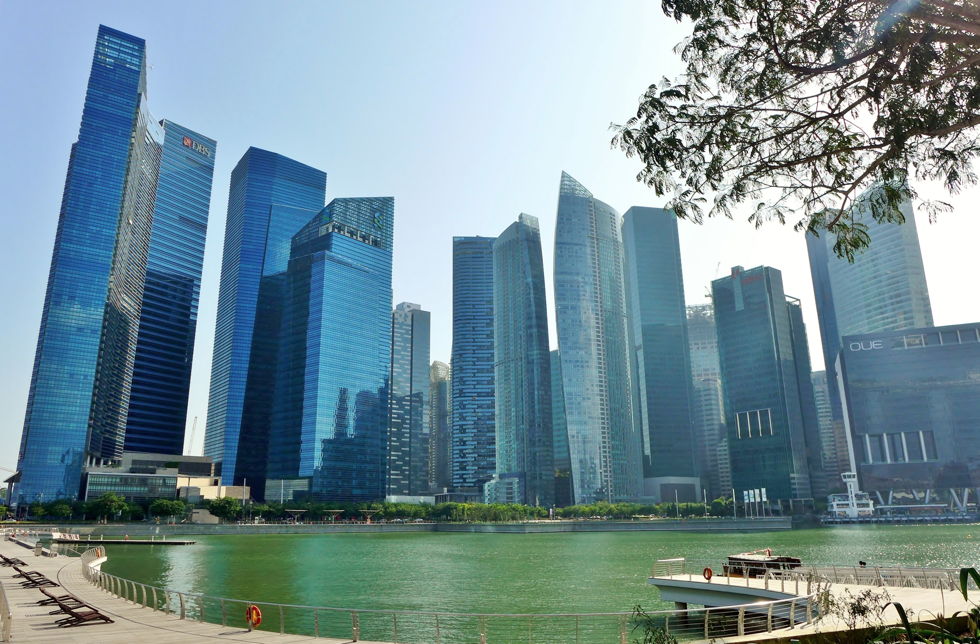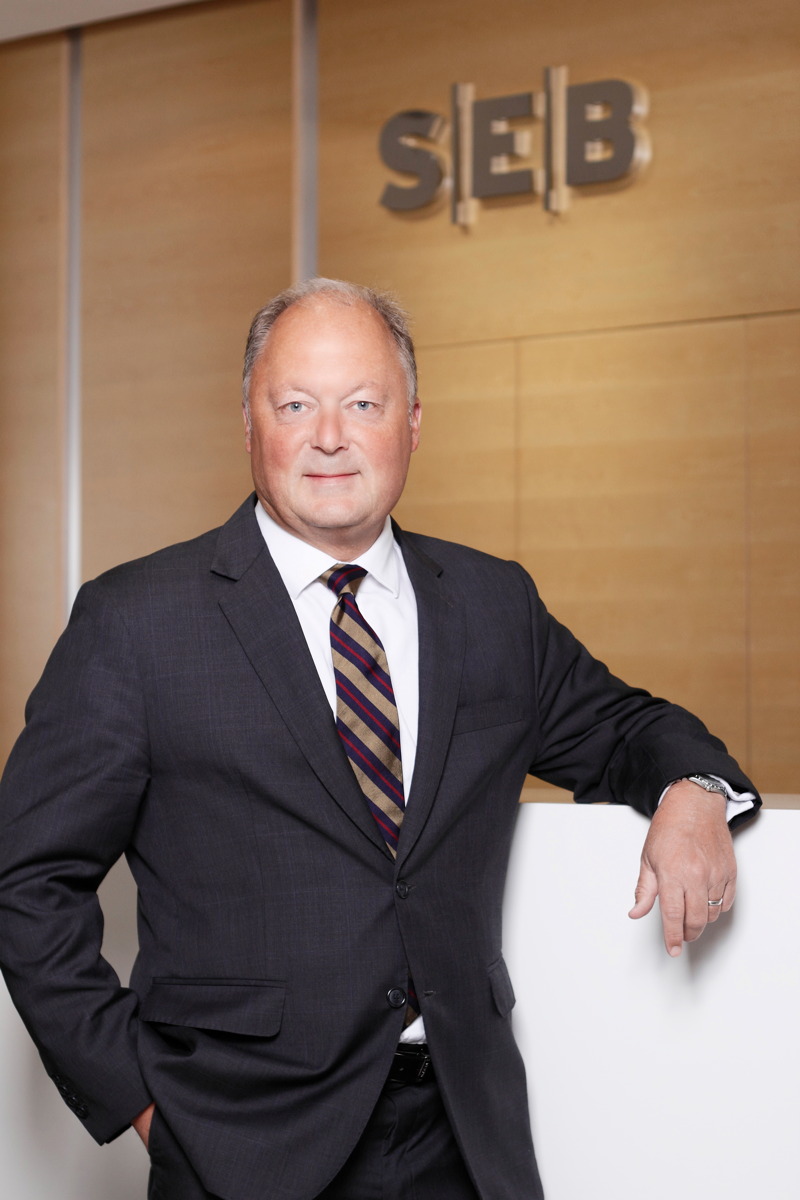SEB Large Corporates & Financial Institutions has an impressive track record and is today an established player in the global arena. Its presence in Asia is comprehensive, covering an area from India to New Zealand, and supported by some 200 team members including Greater China. Back in the Nordics the bank has been contributing to the success of Northern European companies in the international marketplace for over 160 years.

Jan Stjernström is the Managing Director of SEA & Pacific Region, SEB in Singapore, SEB’s largest office outside Europe. He presents their operation, challenges and opportunities, and the positive outlook on Asia.
When it comes to the European customers, Singapore is still very much a regional centre for many businesses, even though you have some which are based in Kuala Lumpur and some in other places for historical reasons, states the MD, who believes that Singapore’s importance can only increase.
“If you look at the development also in Northern Asia, demographically and cost-wise, it is that the production is moving south along with increasing cost levels in Northern Asia. From an education point of view you have very highly skilled staff in Singapore and in many Asean countries due to improving education levels in this part of the world. Many of these countries are starting to come up as serious global competitors. Examples are Vietnam, the Philippines but also Thailand and Indonesia with their large markets. Over time we expect there to be extremely good GDP growth numbers – 5-7 per cent has been mentioned as the annual growth forecast for the next ten to twenty years, which are significant numbers compared with Europe! Singapore as a hub will clearly benefit from that.”

In Asia SEB’s core business is with the large Northern European corporations, but also SMEs from the Nordics: “We do various kinds of cross border financing arrangements all over the region. The other area is trade finance, which is about facilitating sales and in some trade finance services SEB can add financing elements enabling sales of capital goods products. That’s something we are increasing actually; lending has increased but trade finance even more, where we believe we have increased our market share thanks to having a very high service quality.”
“We are seeing these two as expanding services precisely because of the growth in the region, leading to that when our customers are expanding along with that growth the financing needs increase as well as the need for trade finance – it all interlinks.”
SEB has broadened the possibilities within trade finance to enable their clients to redefine the financial and administrative processes associated with overseas trading. Financing can be integrated into SEB’s customer’s offering as they in turn can benefit their customers and suppliers.
 In Singapore we also have units specialised in shipping finance as well as working with financial institutions. “The Asian financial institutions need to diversify their investments, seeking products from Europe and the OECD countries. We can facilitate such investment solutions and also foreign exchange trading in Asia. We also have financial institutions back home investing here in Asia.”
In Singapore we also have units specialised in shipping finance as well as working with financial institutions. “The Asian financial institutions need to diversify their investments, seeking products from Europe and the OECD countries. We can facilitate such investment solutions and also foreign exchange trading in Asia. We also have financial institutions back home investing here in Asia.”
Looking at the various markets the Swedish MD says he is fascinated by the fact that a “very positive world economy” is reflected in nearly all sectors in Asia, where SEB serves their Northern European customers across the board, including also niche players. “Both the larger corporations and SMEs are succeeding now in Asia since there is a strong demand. What is a bit unique is that smaller players can now reach out to a larger market via the Internet in an entirely new way and succeed in doing so when previously these kinds of markets may have been expensive to exploit. Nowadays also small firms can sell effectively in the region as well as globally.
More SMEs are thus also arriving to the region, SEB has noticed, among the otherwise steady stream of Nordic company business visits to the region: “Large companies have been present for a hundred years or more and medium-sized companies came here maybe 10 or 20 years ago. But now the niche players are also coming, which is great to see.”
Looking at the various countries Jan Stjernström highlights: “Indonesia is a big market and one with large infrastructure investments that give enormous opportunities for all possible players to get their share of the pie. In the Philippines there is a lot of infrastructure investment in the works too and our economists are seeing signs of overheating in parts of its society. For the latter it will be key to have a pace of development that stays sustainable because it has been a fast changing market.”
Vietnam, meanwhile, which is about to implement its FTA with the EU, is of course high on the agenda for the Nordic bank and business. “It’s a very dynamic development and what’s interesting with a country like Vietnam is that the labour cost is low, while you have well educated workers. They also automate production leading to an industrial development that promise to be very competitive. You could think that it is low tech industries setting up or moving there but that is not the case; it’s also automated industries. This is a dilemma for the west, when many of these countries are also starting to compete on automated production processes. It leads to a fight about the job opportunities in the world!

The vast geographical area and diversity of the different markets is what Jan and his team must deal with, and, on top of that, an increased regulatory framework.
“You have increased demands for information sharing etc., also towards customers, with MiFID II. It takes a lot of resources, but many of the changes are meant to safeguard our customers so we welcome such changes. We believe that it will benefit our customers at the end of the day.”
MiFID II is EU legislation designed to offer greater protection for investors and inject more transparency into all asset classes: from equities to fixed income, exchange traded funds and foreign exchange.
“I think that the conservative and compliant approach we have had in terms of how to deal with all these regulatory issues has enabled us to build a franchise that works for the long term. It has really benefited us,” concludes Mr Stjernström.
Asked about digital disruption he explains that regional work is being done about trade finance but that it is also complex and many components to digitise.
The biggest challenge is to get all parties aligned and agree on global standards to make it effective, and while innovations have been rolled out, no comprehensive modernised or revolutionary new solution has been created so far.
“But I think it is with trade finance where something could really happen in Asia, being something to watch closely. If the market participants can get things to work and get digitised confirmations both when it comes to the shipment of goods and the connection between the banks and what we call the letter of credit business it would be a revolution. The principles for trade finance have largely been unchanged for several thousand years. There is however the complexity in that there are so many parts and players within the trade finance business. It is no easy task for sure.”
“Within trade finance we currently focus on the quality of our service. We have had digital services for quite a while and we are developing new technologies for the future.”
